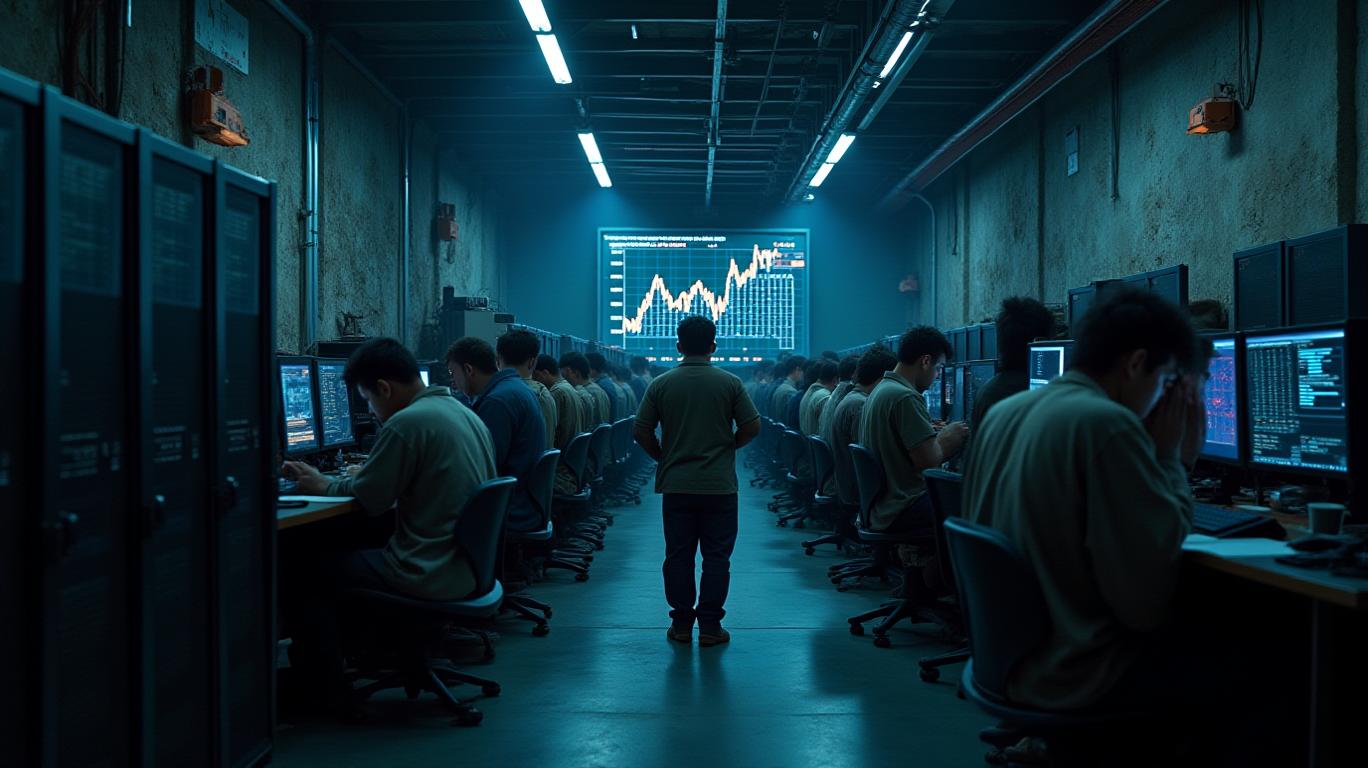Bitcoin Miners Face 22% Market Value Loss Amidst Halving and Crypto Price Drop
Wednesday, Mar 5, 2025 3:29 am ET

Bitcoin miners are grappling with a significant 22% market value loss, as the recent Bitcoin halving and falling crypto prices have put immense pressure on their profitability and operational costs. The halving event in April 2024 reduced mining rewards, while the decline in Bitcoin's price has further strained miners' operations. In this article, we will explore the impact of these market conditions on Bitcoin miners and the strategies they have employed to adapt to the challenges.
The Bitcoin halving, which occurs approximately every four years, cut mining rewards from 6.25 BTC to 3.125 BTC per block. This reduction led to a 46% drop in mining revenues and a 57% drop in gross profits for miners, according to JPMorgan (Source: JPMorgan research note, March 3, 2024). Additionally, the falling crypto prices have made it more expensive for miners to sustain operations, as their revenue decreases while energy costs remain relatively stable. In February 2024, Bitcoin's price dropped by 10%, and miners' daily block reward revenue fell by 5% to an average of $54,300 per EH/s (Source: JPMorgan research note, March 3, 2024).

To mitigate the 22% market value loss, Bitcoin miners have employed various strategies. Some miners have focused on improving their mining efficiency by increasing their hash rate and reducing energy consumption per terahash. For instance, Bitdeer has been working on improving the efficiency of its Sealminer A1 ASICs, aiming to reach an efficiency of 5 j/TH by Q2 2025. This strategy can help miners reduce their operational costs and maintain profitability despite lower Bitcoin prices.
Other miners have explored new revenue streams to offset the impact of reduced block rewards. For example, Bitdeer has launched an AI cloud service to expand its user coverage and generate additional revenue. Additionally, some miners have repurposed their data centers to support the AI industry, capturing tailwinds in AI development. However, this strategy may have faced challenges, as seen in January 2024 when Deepseek's AI model launch weighed on Bitcoin miners diversifying into AI.

Mergers and acquisitions (M&A) have also been employed by miners to consolidate their positions and gain access to cheaper renewable energy sources. In May 2024, Riot Platforms expressed interest in acquiring Bitfarms, while CoreWeave made an unsolicited all-cash offer to acquire Core Scientific. Although these offers were initially rejected, further consolidation within the industry is expected as infrastructure with cheap renewable energy becomes more challenging to source and acquire.
Increasing hash rate has been another strategy employed by miners to maintain their market share and potentially increase their revenue, despite lower Bitcoin prices. For example, IREN achieved its milestone hash rate target of 10 EH/s ahead of schedule and announced an increase in its planned hash rate for the remainder of 2024 from 20 EH/s to 30 EH/s.

Macroeconomic factors, such as trade tensions and geopolitical uncertainties, have also influenced the performance of Bitcoin miners and the broader crypto market. In February 2024, US President Donald Trump's announcement of tariffs on key partners, including Canada, Mexico, and China, sparked market panic and led to a collective 22% drop in the market capitalization of 14 top U.S. public miners (JPMorgan, March 3, 2024). This decline in market capitalization was accompanied by a 5% decrease in mining revenue, with miners earning an average of $54,300 (AU$86,751) per EH/s (JPMorgan, March 3, 2024). The broader crypto market also experienced significant volatility, with Bitcoin's price fluctuating between US$78,452 and US$94,727 during late February and early March (CoinMarketCap, March 3, 2024). Additionally, macroeconomic concerns, such as potential trade tensions, added further pressure to the cryptocurrency and mining ecosystem (JPMorgan, March 3, 2024).
In conclusion, the recent market conditions, including the Bitcoin halving and falling crypto prices, have significantly impacted the profitability and operational costs of Bitcoin miners. While miners have employed various strategies to adapt to these challenges, the effectiveness of these strategies ultimately depends on each miner's specific circumstances. Macroeconomic factors have also played a role in the performance of Bitcoin miners and the broader crypto market. As the crypto market continues to evolve, miners must remain agile and innovative to navigate the ever-changing landscape and maintain their profitability.


_442a2dcc1749832873286.jpeg)
_e68fac6d1749831664430.jpeg)





